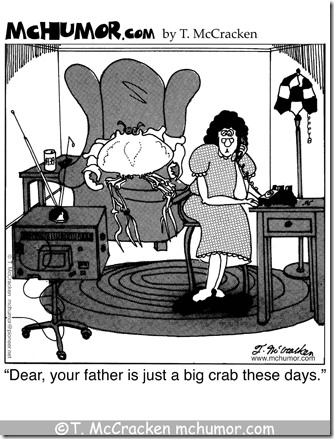so crazy it might work
When you do a Google image search for "sixteen" you get two types of results: the literally porny and the metaphorically porny. We're going with metaphorically. This is a wikipedia commons image used in the articles on "sausage" and "gluten-free diet."
So… yeah. As mentioned in Friday's UV, the big expansion news was exactly nothing and we can all resume our lives without feverishly plotting complicated ways to make a 16 teams have a meaningful championship with only 8-10 games at their disposal. Unfortunately for many, many people this comes too late.
First: Brian Fremeau points out that current NCAA bylaws demand you have at least twelve teams to stage a championship game. They also require that there are two divisions in which everyone plays each other and that the champions of those divisions play in the game. If we're blowing the world up here you can probably get this to change, but that's a hurdle for the more elaborate proposals.
 Skeptics
Skeptics
Many people complained that anything other than something boring and unbalanced would never happen. Skepticism noted. Now please return to your crabholes and have crabfights with the crabwife. You are crabby.
(@ Right: the funniest thing that has ever been put on paper. Do you see what T. McCracken did there? I do. I do so hard.)
Pod People
As The Only Colors puts it:
With 16 teams, I think you have to go with something like this--basically playing a multi-round playoff, but hiding the first couple rounds in the regular season. But I also hate to lose the familiarity of playing major rivals every year and being guaranteed to play everyone in the conference at least once every few years.
A lot of people suggested organizing the Big Ten into pods of four. Instead of two static eight-team divisions there are four four-team pods. Each year a pod is paired with a different pod, so instead of playing seven teams every year and eight teams very infrequently you play three teams every year and twelve once every three years. This is similar to what the WAC did when it was a 16-team monstrosity.
So keep the pods in the back of your mind as you ponder…
In-Season Playoffs
I came to the conclusion that the most feasible way to have a meaningful conference schedule was to play all your divisional games first and then have dynamically allocated crossover games against teams about as good as you. This appears to be a common solution, but most other people used the leftover games to stage an in-season playoff.
In-season Semifinals
TOC's proposal is similar to the Totally Bats Proposal with the following exceptions:
- Four team rotating pods.
- There's one bonus game where the #1 in division 1 plays the #2 in division 2 and vice versa, followed by a championship game.
Feasibility: Leaving aside TOC's ludicrous divisions, which cleave Michigan from Ohio State and Wisconsin from their triangle of hate with Minnesota and Iowa? About as good as BTWC. Maybe better since there only 8 conference games still, but if the BIg Ten really goes to 16 they almost have to add a ninth conference game; at that point I'd be in favor of a tenth, bowl eligibility be damned.
Efficacy: I like mine better because it's a better intersection of the top teams.
Fun factor: Not crazy enough for me.
In-season Semifinals With Pod Divisions
Maize 'n' Brew proposes four team-pods like TOC. Conference schedules are a round robin in your pod and five games against other opponents that are "selected by committee." That's a little odd. I imagine they'd put in a rotation of some sort. The winner of each pod heads to a semifinal game. The remaining teams play another conference game.
Feasibility: would require major change to bylaws to pass. Otherwise similar to other in-season playoff proposals.
Efficacy: eh… too much randomness in your opponents for my tastes
Fun factor: About the same.
In-season Eight(!) Team playoff
MGoUser U of M in Tx proposes what's essentially an eight-team playoff with the top four in each division making it. Seeds are not exact because he attempts to even up the home games and priority is placed on avoiding rematches if possible. Since everyone keeps playing, there are still nine conference games for everyone. He also proposes the bottom eight have a similar tournament with some special bowl bid on the line; that adds a second championship-ish game on the same weekend as the actual championship.
There's another version of this from Tacopants that has four-team pods with two protected rivalry games outside of the pods, two more crossover games, and the eight-team in-season playoff. It does not use divisions.
Feasibility: worse than the backwards group because it requires the NCAA to approve a second championship-type game. Does violate the bylaw because two teams from the same division could make it to the final.
Efficacy: Eight team playoff ranks highly here. Playoffs make more sense as you add teams and remove games.
Fun factor: Good. Quasi-championship game would be kind of fun, if not that important.
Totally Impractical Stuff
And if I think it's impractical, everyone else does.
maddogcody suggests a divisional format where the last week of every season is a game against your counterpart in the other division at a neutral site that is another home stadium in the Big Ten. That's a really weird way to force everyone to travel an a guarantee of many empty seats.
The Mathlete suggests a wholesale reimagining of the BCS conferences that ends with five separate 15-team conferences that play an eight-team playoff at the end of the year. Individual conferences are broken down into five-team divisions that play each other and two or three opponents in the other divisions. Division champions plus one wild card make conference playoffs. This one requires 17 games for national championship game participants and for five different conferences to do the same thing. Too many cats to herd.
Boston College blog BC Interruption chips in with a question:
Why Stop At 16?
This is one of those questions where if they don't know, you can't tell 'em. BCI absorbs the entire Big East plus Notre Dame to create a 20-team league that operates as two separate Pac-10s. Michigan gets chucked in a division with UConn, Syracuse, Rutgers, WVU, Cincinnati, Pitt, Penn State, Michigan State, and Ohio State, never to play for the Little Brown Jug again. For a thousand reasons from "Cincinnati and Louisville in the CIC" to "gaaah," this thing is never getting off the ground.
Priorities and Conclusions
Any conference that bloats to 16 teams is going to have problems determining a real champion without resorting to some oddities. A plain old divisions-plus-random-crossover-games setup is going to make the other division feel alien and introduce scheduling quirks that promise to have a distorting effect on the conference title race. Virtually all solutions propose taking information from early in the season and applying it to the last couple weeks of the season so that good teams play each other, whether it's in the form of a playoff in all but name or a crazy World Cup group or divisions-plus-nonrandom-crossover-games. That seems like the only way to make a 16-team football conference functional.
And now I will stop talking about this for at least three months, promise.
Okay. Complaints about a lack of clarity in the 16-team bats scenario have been lodged and heeded. Let's walk through an example of the "backwards scenario," which I will dub "Dynamic Crossover" because it sounds cool.
Yes, this is all irrelevant for at least a year now, and given the accuracy of media speculation to date the Big Ten will probably end up kicking everyone except Illinois and Northwestern out, and the chances that the Big Ten will adopt anyone's loony internet proposal are dim indeed. It's April 22nd. Minds will wander. On with show.
Show
Let's say the final standings of each eight team division are like so:
| Bo | Record | Woody | Record |
|---|---|---|---|
| Ohio State | 7-0 | Penn State | 6-1 |
| Nebraska | 5-2 | Iowa | 6-1 |
| Michigan | 5-2 | Pitt | 5-2 |
| Michigan State | 4-3 | Wisconsin | 4-3 |
| Illinois | 3-4 | Minnesota | 3-4 |
| Northwestern | 2-5 | Missouri | 3-4 |
| Purdue | 1-6 | Rutgers | 1-6 |
| Indiana | 1-6 | Notre Dame | 0-7 |
We now break the conference into four groups:
| Paterno | Osborne | Colleto | Dinardo |
|---|---|---|---|
| Ohio State | Penn State | Illinois | Minnesota |
| Iowa | Nebraska | Missouri | Northwestern |
| Pitt | Michigan | Rutgers | Purdue |
| Michigan State | Wisconsin | Indiana | Notre Dame |
"Paterno" and "Osborne" are the good teams, "Colleto" and "Dinardo" the bad ones. Now we play games that haven't already been played in each group. Hypothetical focus on Paterno:
- Ohio State has already played Michigan State, with OSU winning. (They dominated in yardage but a series of fluky turnovers made it look closer than it was.)
- Iowa beat Pitt 6-5.
In week one:
- Ohio State plays at Pitt. Pitt wins.
- Michigan State plays at Iowa. Iowa wins.
In week two:
- Pitt plays at Michigan State. Pitt wins.
- Iowa plays at Ohio State. Ohio State wins.
The final standings:
| Paterno | Group | Conference |
|---|---|---|
| Ohio State | 2-1 | 8-1 |
| Iowa | 2-1 | 7-2 |
| Pitt | 2-1 | 7-2 |
| Michigan State | 0-3 | 4-5 |
Ohio State advances to the conference championship game by virtue of its overall record. You'll note that it is hard or even impossible for third or fourth place teams to win through—Pitt won both of its crossover games and still didn't make it—but this seems like a good compromise between keeping a lot of teams involved and making sure the totality of the regular season is weighed appropriately.
Simple Variant
If this is too complicated or falls foul of the NCAA's bylaws that restrict conference championship games to conferences that play round robin in two separate divisions, you can get rid of the group concept but leave the crossover games dynamic. The scheduling remains the same—#1 and #4 play #2 and #3 from the other division—but the winner is just the team in each division with the best record.
Pros
- Crossover games are equitable, important, and high profile.
- Guarantees two weeks of hyped games between good teams, culminating in a championship game.
- Eliminates unbalanced scheduling complaints.
Cons
- Leaves two weeks of the season uncertain. Although you know you'll be playing you don't know where or against who.
- Increases the chance of a championship game rematch.
- Increased connectivity between top teams will add extra losses and may hurt chances at additional BCS bids.
 this is a sculpture called "Very Hungry God," so it goes here. the little boy is ND.
this is a sculpture called "Very Hungry God," so it goes here. the little boy is ND.
The old bats idea was for 14 teams and wouldn't have worked anyway. And with Big Ten expansion probably definitely happening now and probably definitely being the crazy XXL version, a 14 team Big Ten is so March. Give us 16 and give us the death of the Big East, even if it doesn't make any sense.
If this is happening, it's important that whatever form the Big Cthulhu takes makes as much sense as possible. Since the usual divisional stuff makes no sense and would see Michigan play opponents in the opposite division slightly more than once a decade, this requires thinking outside the chicken patties. So here's another crazy idea. The new bats idea: it's the World Cup, yo.
The New Bats Idea
So the problem with 16 is that it doesn't divide very well. You have two choices if you want to split teams up: eight or four. Thinking inside the chicken patties provides eight and all the stupid problems that go along with that. Four is interesting.
Divide the Big Ten into four groups of four based on last year's standings. (1-8-9-16, 2-7-10-15, etc.) Everyone plays each other.
| Bo | Record | Woody | Record | JoePa | Record | Fry | Record |
|---|---|---|---|---|---|---|---|
| Michigan | 3-0 | OSU | 2-1 | PSU | 2-1 | ND | 3-0 |
| Iowa | 2-1 | Wisconsin | 2-1 | Nebraska | 2-1 | Missouri | 1-2 |
| Michigan State | 1-2 | Minnesota | 1-2 | Purdue | 2-1 | Pitt | 1-2 |
| Indiana | 0-3 | Northwestern | 1-2 | Illinois | 0-3 | Rutgers | 1-2 |
Top two teams in a group get put in an eight team division at the top; bottom two get put at the bottom. Point differential breaks ties. Everyone plays each other except for the teams that have already played.
| Division 1 | |||||||
|---|---|---|---|---|---|---|---|
| Michigan | Iowa | OSU | PSU | ND | Missouri | Nebraska | Wisconsin |
| Division 2 | |||||||
| Michigan State | Minnesota | Purdue | Pitt | Indiana | Northwestern | Illinois | Rutgers |
At the end of the year, the winner of the top division wins the conference.
(Variant: instead of lumping teams into eight team divisions on the second go-round, do another round of four team groups that split the top and bottom of the conference into approximately equal sets. Then do a third round of four team groups, two of which offer their winners a bid to the conference title game. The "contenders" groups consist of: the winner of both loser groups, the top two teams in each winners group, and the teams with the best conference records after that. This is probably too complicated.)
This makes a lot more sense to me than playing Penn State once a decade. You play a subsection of the conference based on how good you are. If you go from really bad to really good, as Penn State did in the middle of the decade, you don't get locked out of a championship game before the season starts.
There are a bunch of tricky issues, though: unbalanced home and away in the early section means getting through your group is partially dependent on home/road split. Getting stuck in the second division basically ends your conference championship hopes and that can happen with just one loss (see the PSU group above). And teams wouldn't know who they were playing, or even what their home/road split would look like, until midseason. Protected rivalries would be a thing of the past.
What about a…
Backwards Version!
Do the divisions first. Play seven games. At the end of the year create groups based on finish in the divisions.
| Contenders A | Contenders B |
|---|---|
| Div A #1 | Div B #1 |
| Div B #2 | Div A #2 |
| Div B #3 | Div A #3 |
| Div A #4 | Div B #4 |
(Other teams would get sorted into groups as well and play out the rest of the season; these matchups can take rivalries into account because if you're not playing for the conference title you might as well play someone you hate.)
Play the two games you haven't already; the games you have played count in the group standings. The winner of each group gets a bid to the conference title game. First tiebreaker is overall conference record. Variant: Play a tenth conference game and do a full round-robin in each subdivision. Teams seeded #1 and #2 get the extra home game. The variant provides everyone who makes the contenders groups a reasonable chance at winning them, but does guarantee one rematch per year. It also severely restricts nonconference opportunities.
This version is way more doable. Teams would be able to lock down ten of their 12 games before the season. The clawing for the fourth spot in a contenders group would keep most of the conference at least theoretically in the title hunt until deep into the season, but keeping the result from the earlier game and using overall conference record as tie breaker gives the top team in each division a big advantage. The extraneous games against the other conference would be sort of like playoff games. They wouldn't be random, unbalancing games with a distorting effect on the conference race. They would have purpose.
You want games to have purpose, don't you? You don't want them wandering around being all pointless, do you?
 In Which I Pretend To Be Ives Galarcep
In Which I Pretend To Be Ives Galarcep
What do you think? Should Ricardo Clark have stayed in MLS?
I want more ideas. If a Big Cthulhu conference happens there should be so many different possibilities for the leadership to consider that they get very confused and actually pick one of them instead of defaulting to a divisional format that leaves everyone zo unsatisfied at the conclusion of a season (or the decade) when they drew the top two teams in the Bo division and the team that won your division drew Indiana and Northwestern and you haven't played Penn State since JoePa's age could be practically expressed without scientific notation.
So email me or post a diary or put it on the message board or pick this proposal apart—it's got its flaws—and we'll revisit this at a later date if this turns out to be something other than a game of chicken with the Big East and the Notre Dame administration.
Could you imagine that, by the way? The Big Ten waves its pointy stick at the Big East and manages to get them to boot Notre Dame and then ND ends up joining a 12-team Big Ten? Jim Delany would instantly be the most frighteningly Machiavellian person on the planet.


23